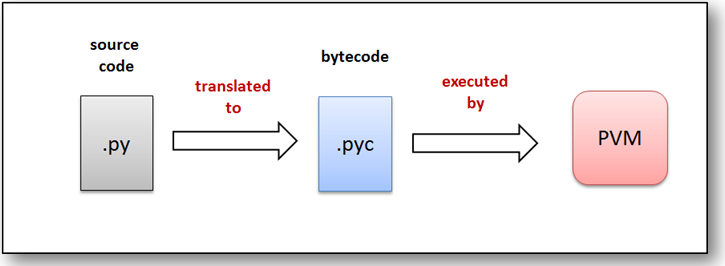
Prev: What to install | Next: Namespaces and Modules
Language execution model¶
Python interpreter¶
Python is implemented mostly as an interpreted language, but part of the execution process is actually code compilation.
Being interpreted means that the Python code you write is input to an interpreter program that executes the code as it reads it line after line (usually python source code is saved in .py files)
- This interpretation process is distictively different from compilation (in languages like C or Java) where the language compiler translates initially the code into compiled form (a form of code closer to what the machine 'understands').
Pros/cons of interpreted implementation:
- Pros: interpretation offers a more interactive learning experience to the beginner, as it immediately executes the code and provides feedback
- Cons: interpretation tends to be slower in code execution since an interpreter reads (parses), interprets and executes source code 'from scratch' each time (no compiled form of code is created).
Bytecode and Python Virtual Machine (PVM)¶
- Python, however, is not a simply interpreted language. Code execution is somehow more complicated.
- In essence, Python creates an intermediate translated form of code called 'bytecode'. This is platform independent code (usually in .pyc files) which is executed by a special form of Python program called "Python Virtual Machine" (PVM)
- Since executing bytecode is faster than executing source code from scratch Python tends to be faster than purely interpreted implementation.
- When working with Python the problem of interpreted-code slower execution is alleviated by at least two factors:
- (a) Contemporary hardware is fast enough to efficiently execute Python bytecode in many situations
- (b) In time critical situations there is always the possibility of "mixing" Python with faster executed compiled C code.
Actually the basic Python you learn is itself written in C ('CPython' implementation), meaning that many of its modules call C compiled code routines, thus achieving C comparable execution times.

Python language core execution model

Copyright¶
 . Free learning material
. Free learning material
. See full copyright and disclaimer notice